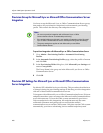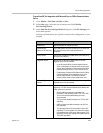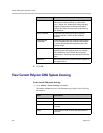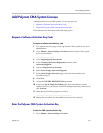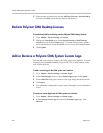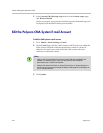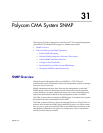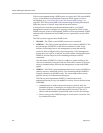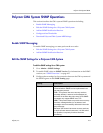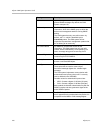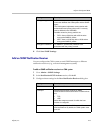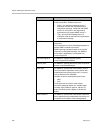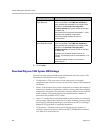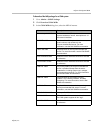
Polycom CMA System Operations Guide
416 Polycom, Inc.
Polycom recommends using a MIB browser to explore the CMA system MIB.
A copy of the MIB can be downloaded from the CMA system. For more
information go to “Download Polycom CMA System MIB Package” on
page 422. The CMA system MIB is self-documenting including information
about the purpose of specific traps and inform notifications.
It is important to note that you should understand how your SNMP
management system is configured to properly configure the CMA system
SNMP transport protocol requirements, SNMP version requirements, SNMP
authentication requirements, and SNMP privacy requirements on the CMA
system.
The CMA system supports three SNMP levels:
• Disabled—The CMA system SNMP processes are turned off.
•SNMPv2c—The CMA system implements a sub-version of SNMPv2. The
key advantage of SNMPv2c is the Inform command. Unlike Traps,
Informs are messages sent to the management system that must be
positively acknowledged with a response message. If the management
system does not reply to an Inform, the CMA system resends the Inform.
SNMPv2c also has improved error handling and improved SET
commands.
One drawback of SNMPv2c is that it is subject to packet sniffing of the
clear text community string from the network traffic, because it does not
encrypt communications between the management system and SNMP
agents.
•SNMPv3—The CMA system implements the newest version of SNMP. Its
primary feature is enhanced security. The
contextEngineID
in SNMPv3
uniquely identifies each SNMP entity. The
contextEngineID
is used to
generate the key for authenticated messages.
The CMA system implements SNMPv3 communication with
authentication and privacy (the
authPriv
security level as defined in the
USM MIB).
— Authentication is used to ensure that traps are read by only the
intended recipient. As messages are created, they are given a special
key that is based on the
contextEngineID
of the entity. The key is
shared with the intended recipient and used to receive the message.
— Privacy encrypts the SNMP message to ensure that it cannot be read
by unauthorized users.



